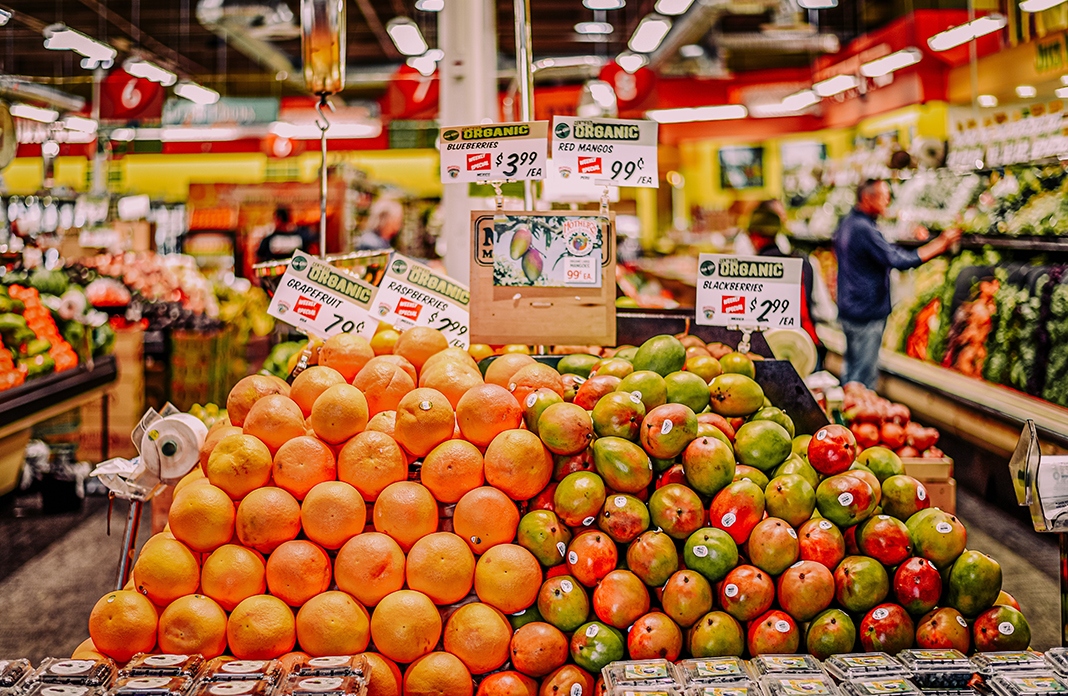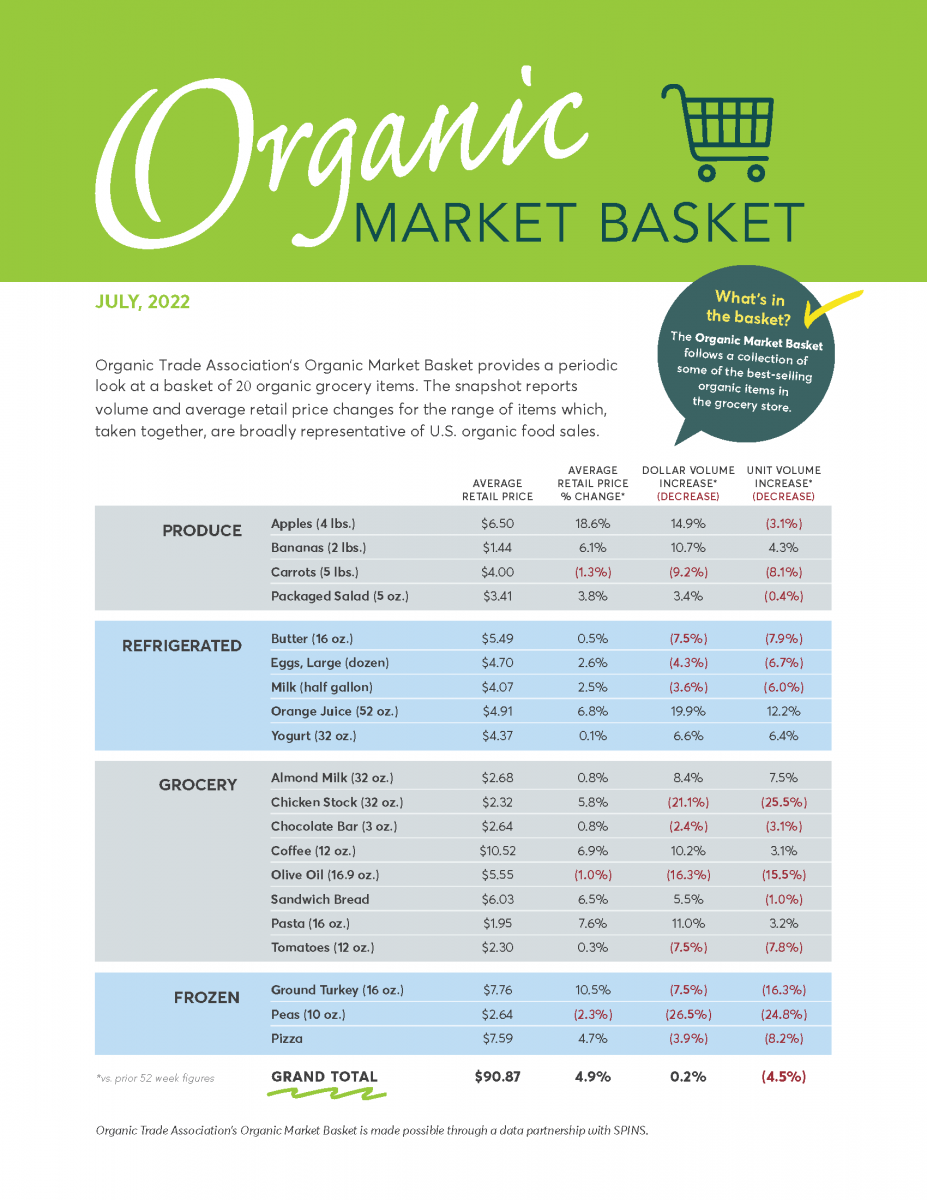
Pricing Pressures
Consumer prices are on the rise. According to the U.S. Bureau of Labor Statistics’ Consumer Price Index, food prices are up just over 10 percent from a year ago. Organic foods are no exception; only three out of 20 items in the Organic Market Basket did not see a price increase this period. Ongoing supply chain shortages (labor, ingredients, and transportation) have conspired to push prices higher. Organic prices, while slower to rise initially, are not exempt from these pressures. Here are a few observations by major category.
Produce
Organic produce managed to gain dollars, but unit volume was down overall, an unusual development in the category. In the case of bananas, increased prices are a good thing, as produce industry leaders have long held that organic banana prices were unsustainable—far below what growers need to sustain their businesses. Apple prices were also significantly higher, but this is largely a seasonal phenomenon, as domestic supplies dwindled leading into the summer months.
Refrigerated
While demand for dairy products revived during the pandemic, U.S. organic producers face unique difficulties, including high costs for feed and other inputs. Milk, butter, and eggs all lost dollars and volume, though organic yogurt continued to ascend. Organic orange juice is also a bright spot in the refrigerated case—as families return to a beloved staple of the breakfast table after years of sugar-shunning juices of all kinds.
Grocery
Center store is the section of most concern as we dip into an economic downturn. We know from years of studying the organic industry—both on the market side and through consumer research—that the further removed a product is from the field, the less likely shoppers are to prioritize purchasing organic. Most shoppers do not know that organic standards reach beyond the field and into the manufacturing facility, keeping artificial colors, flavors, and preservatives (as well as those from GMO ingredients) out of processed foods.
When we educate our shoppers about the full spectrum of organic benefits—not just the growing practices, but post-harvest, including processing requirements—we create a layer of economic insulation for organic processed foods, making them more resilient to price sensitivities.
Frozen
All three items tracked in the Basket saw dollar and unit volume decreases. Two of three items took price. Those working in the cold chain have struggled to overcome myriad challenges, including capacity, transportation, and labor constraints. Overall, though, the freezer set has seen a resurgence over the past few years. Frozen organic foods are seen as innovative, convenient, and cost-efficient. The upshot is: despite losses for the period, these organic categories are still trending above their pre-pandemic levels.
Angela Jagiello is the Director of Education & Insights for Organic Trade Association.

This article was originally published in the Fall 2022 Organic Report, you can view the full magazine here.
